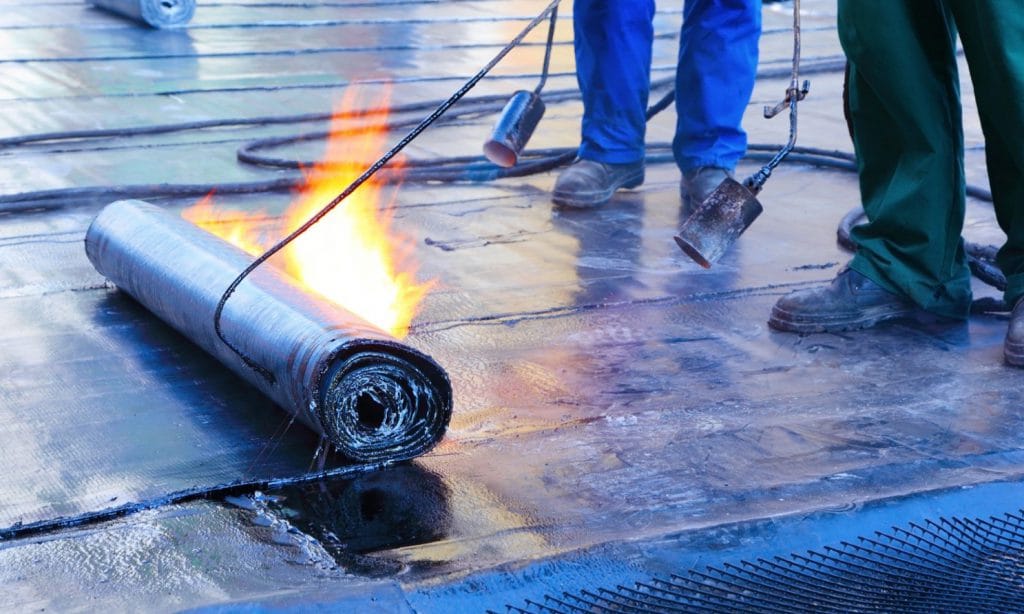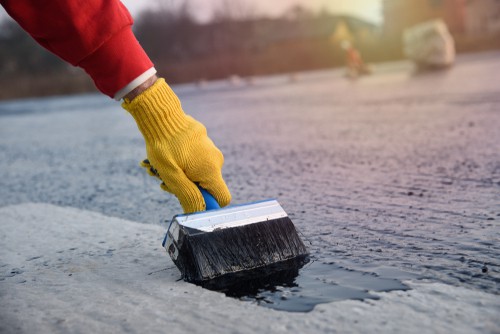Just How Waterproofing Works: A Detailed Take A Look At Techniques and Technologies
Waterproofing is necessary for shielding frameworks from moisture-related damage. It involves numerous techniques and modern technologies that produce obstacles versus water invasion. Typical approaches, such as compressed clay, exist side-by-side with modern technologies like liquid-applied membrane layers. Comprehending the subtleties of these methods is essential for effective application. The performance of any kind of waterproofing service pivots not just on the methods used but likewise on continuous upkeep and inspection. What are the crucial elements that affect lasting efficiency?
Comprehending the Basics of Waterproofing
Waterproofing is an essential procedure that shields structures from water invasion, which can result in considerable damages with time. This method entails the application of numerous products and techniques designed to create an obstacle against wetness. The key objective is to stop water from permeating surface areas, which can create damage, mold growth, and structural instability.Various factors influence the selection of waterproofing method, consisting of the kind of framework, its place, and environmental conditions. Understanding the physics of water motion and the properties of various materials is critical in selecting a reliable waterproofing solution.Effective waterproofing not just safeguards structures yet also improves their longevity and stability. Generally, it is integrated right into the style phase of building to assure detailed security. As awareness of water-related issues expands, the significance of recognizing waterproofing principles comes to be increasingly clear to engineers, contractors, and property proprietors alike.
Typical Waterproofing Methods
Conventional waterproofing methods have actually been made use of for centuries, relying upon time-tested methods and products to protect structures from water damage. Among the oldest techniques entails making use of clay, which, when compacted, creates a natural barrier versus moisture. Additionally, asphalt, a sticky, black material originated from petroleum, has been utilized for its waterproof buildings, usually put on roofs and foundations.Another strategy involves the application of lime-based plasters, which supply a breathable layer that enables moisture to leave while avoiding water ingress. Thatch roofing, a typical approach still seen in some societies, supplies superb waterproofing as a result of its securely loaded straw layers.Moreover, using stone and block has projected, as these products are naturally resistant to water when properly mounted. On the whole, typical waterproofing methods stress the significance of selecting appropriate materials and construction practices to enhance toughness against water invasion.
Modern Waterproofing Technologies
Improvements in modern-day waterproofing modern technologies have reinvented the means frameworks are shielded from water damages. Cutting-edge strategies such as liquid-applied membranes and advanced sealers have boosted the effectiveness and versatility of waterproofing options. These modern technologies allow for smooth application, decreasing the risk of leaks and ensuring complete protection over intricate surfaces.Moreover, the combination of clever modern technologies, such as wetness sensors and automated tracking systems, makes it possible for real-time assessment of waterproofing performance. This aggressive method promotes timely upkeep and minimizes long-term repair costs.Additionally, developments in spray-applied coatings use fast application and superb bond, adapting to different substratums while offering robust defense. Strategies like polymer-modified systems better improve versatility and resilience, making them appropriate for varied settings. Overall, contemporary waterproofing technologies not only minimize water invasion but additionally add to the durability and sustainability of structures, noting a significant shift in the sector.
Products Utilized in Waterproofing
The performance of waterproofing options heavily depends on the materials utilized in their application. Various products are used to produce barriers against water ingress, each with one-of-a-kind residential or commercial properties suited for various atmospheres. Typically utilized products include membranes, coverings, and sealants.Liquid-applied membranes, typically made from polyurethane or acrylic, develop a seamless obstacle that adjusts to complicated surfaces. Sheet membrane layers, usually built from rubber or polycarbonate, deal durability and are suitable for bigger locations. Furthermore, cementitious waterproofing products, made up of cementitious compounds, provide excellent adhesion and flexibility.Sealants made from silicone or polyurethane are essential for joints and joints, making sure extensive security. Additionally, sophisticated materials, such as geo-composite membrane layers, combine numerous features, boosting performance. On the whole, the option of waterproofing materials is crucial in accomplishing durable and efficient water resistance, customized to certain project needs and ecological conditions.
Typical Applications of Waterproofing
Waterproofing plays a necessary function in various industries, making certain the longevity and integrity of structures. Typical applications include household remedies that safeguard homes, industrial infrastructure that safeguards organizations, and industrial setups that call for durable defense against moisture. Comprehending these applications highlights the significance of waterproofing in keeping both safety and functionality across different environments.
Residential Waterproofing Solutions
Numerous homeowners face difficulties with wetness breach, making effective property waterproofing options essential. Various methods exist to resolve this concern, including exterior and interior waterproofing systems. Interior options frequently include the application of sealants and layers to cellar walls, which aid protect against water seepage. Exterior techniques generally include the installation of drainage systems and water resistant membrane layers that draw away water away from the foundation.Additionally, homeowners might take into consideration sump pumps to get rid of water read here build-up and dehumidifiers the original source to control moisture levels. Proper grading and using seamless gutters likewise play an essential function in taking care of water flow around the home. By implementing these approaches, property owners can significantly lower the danger of water damages and mold growth, making sure a completely dry and secure living setting.

Business Facilities Protection
Efficient waterproofing remedies play an important role in the protection of business facilities. Sump pump discharge drainage Omaha. These techniques are essential for securing buildings, parking structures, and bridges from water damages, which can jeopardize structural integrity and result in expensive fixings. Common applications consist of the setup of membrane layers, coatings, and sealants that create obstacles against dampness infiltration. Locations such as basements, roofs, and exterior walls are usually focused on to ensure long life and toughness. Furthermore, waterproofing systems can boost energy efficiency by stopping water-related issues that may bring about mold and mildew growth and degeneration. By carrying out durable waterproofing actions, homeowner can secure their investments and keep functional efficiency, inevitably adding to the total sustainability of industrial facilities
Industrial Applications Overview
While various fields deal with unique difficulties, the need for trusted waterproofing solutions stays a constant in industrial applications. Industries such as manufacturing, construction, and power commonly come across environments where moisture direct exposure can jeopardize architectural integrity and functional efficiency. In producing facilities, waterproofing is essential for safeguarding equipment and products from water damage. In building, it safeguards structures and basements against groundwater seepage. The power industry relies upon waterproofing for the protection of devices in hydroelectric plants and offshore structures. Furthermore, food processing markets utilize waterproofing to ensure hygiene and conformity with security requirements. In general, efficient waterproofing services are essential for improving durability, safety and security, and efficiency throughout different commercial settings.
Upkeep and Durability of Waterproofing Solutions
Although waterproofing solutions are designed to use lasting security against dampness invasion, normal maintenance is important to assure their efficiency and long life - Sump pump discharge drainage Omaha. Regular evaluations play a significant role in recognizing potential concerns such as cracks, peeling, or signs of water damages. Attending to these troubles quickly can stop further deterioration and pricey repairs.Additionally, cleaning the surface of waterproof areas assists remove dirt and debris that could jeopardize the integrity of the look what i found waterproofing barrier. It's likewise advisable to reapply safety finishes or sealants as recommended by suppliers to preserve suitable performance. Ecological elements, such as UV exposure and extreme climate condition, can influence the life expectancy of waterproofing products, making routine evaluation vital
Frequently Asked Concerns
Can Waterproofing Be Applied in Cold Weather?
The concern of using waterproofing in winter elevates problems concerning attachment and curing. Lots of items may not perform at their best in low temperatures, demanding careful option and consideration of certain standards for effective application.
Just How Long Does Waterproofing Normally Last?
The duration of waterproofing efficiency differs based on products and ecological factors. Generally, it can last from 5 to 10 years, yet regular upkeep and evaluations are important to guarantee peak efficiency and durability.
Is Do It Yourself Waterproofing Effective and Safe?
The performance and security of DIY waterproofing depend upon different variables, including worldly top quality and application strategy. While some people accomplish acceptable results, others may come across problems that compromise long-lasting defense and structural integrity.
What Are the Indications of Failing Waterproofing?
Signs of falling short waterproofing consist of visible water spots, peeling off paint, mold and mildew development, moldy odors, and wetness in wall surfaces or ceilings - Water Solutions Omaha. These indications suggest endangered barriers, necessitating timely inspection and prospective removal to stop further damage
How Do I Select the Right Waterproofing Service Provider?
